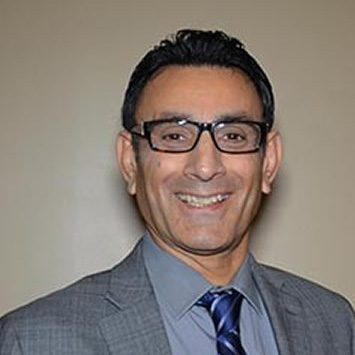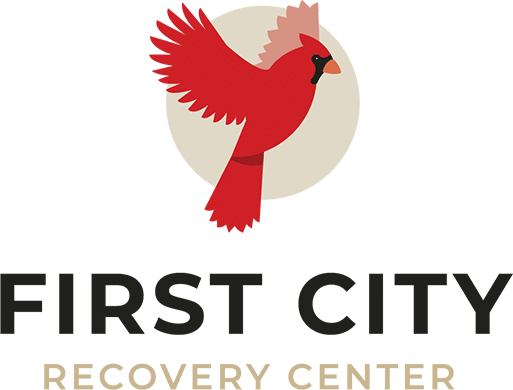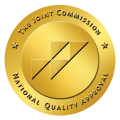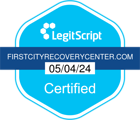Opioid Addiction: Signs, Causes, Withdrawal & Treatment
Opioids refer to a wide range of pain-easing drugs. They can either be manufactured naturally like morphine or made through a chemical synthesis process in a laboratory, as is the case with fentanyl, hydrocodone, oxycodone and codeine. An opioid works by traveling in your blood and attaching to opioid receptors in the brain. Cells are then triggered to emit signals that mute your perception of displeasure or pain, thereby boosting your feelings of pleasure.
Overall, opioid pain relievers are effective when taken as per a doctor’s prescription. However, when taken outside a doctor’s directions, they can yield medically undesired results. Lower than prescribed doses may lead to sleepy feelings, and a large dose may compel the individual to continue wanting more to lengthen the period of pleasure that comes along. In extreme cases, this is what might lead to addiction.
Table of Contents
ToggleOpioid Use Disorder National Outlook
Statistics from the National Institute of Drug Abuse point out that an estimated 1.4 million individuals in the USA experienced opioid use disorder in 2019. The institute says that despite the high prevalence of this disorder, only a paltry 22% of those affected received the proper treatment.
Between 1999 and 2006, the number of victims succumbing to opioid overdose use increased by four times. Besides overdose, the consequences of what the NIDA calls an opioid crisis include high cases of children born dependent on opioids because their mothers used them during pregnancy, and there has been an upsurge of infectious diseases like HIV.
Although misuse of an opioid prescription or even obtaining opioids illegally can come with a host of challenges to physical and mental health, there is hope for recovery. Individuals with opioid use disorder can enroll in an addiction treatment program and receive help to quit their drug habit.
The Signs and Symptoms of Opioid Addiction
Opioids are habit-forming drugs owing to their calming and even euphoric effects. Individuals may be tempted to take more than what is prescribed, leading to opioid use disorder or escalating addictive tendencies. In the wake of such habits, it is crucial to get medical intervention to both prevent overdose and treat the disorder.
If you use opioids, you may wonder whether you have developed an opioid use disorder. Here are the identifiable signs and symptoms of excessive opiate or opioid use:
• Struggling to stay awake or feeling sleepy at odd times
• Detaching from social activities that you were previously actively engaged in
• Experiencing irregular and dramatic mood swings incongruent to your character
• Making very impulsive actions and decisions
• Having pinpoint or constricted pupils
• Having numerous needle marks on legs or hands due to excessive injections
• Having an abnormally inflamed and irritated skin
While the signs above are typically the long-term effects of opioid use, you should also know about the immediate effects. They are usually noticeable within half an hour and may run for several hours after taking the pain reliever. These effects include hallucinations, dizziness or light-headedness, hazy vision, nausea, vomiting, impaired judgment, and abnormally ecstatic or euphoric mood.
If you suspect that you have opioid use disorder, you should seek medical attention immediately. One of the best ways to start treating opioid addiction is by talking to a doctor openly. They can advise you whether to check in to a rehab center or seek treatment as an outpatient. During a treatment program, you can arrange a meet-up with a substance use counselor to explain the behavioral modifications that you will undertake as part of recovery. Under professional guidance, you can learn how to quit your drug use.
Treatment and Recovery Options for Opioid Addiction
Just like diabetes or heart disease, opioid addiction is a chronic disease. However, the positive news is that addiction can be managed, and you can return to a normal and healthy life. When you’re looking for an effective treatment program, choose one that has the following:
• Individualized diagnosis, assessment and treatment plans
• Long-term ways of managing addiction
• Trained professionals to guide you through various therapies
• Provision of recovery support services such as peer support professionals and mutual aid groups
As a chronic problem, opioid addiction has the potential to recur, so it’s wise to choose a rehab center that offers lengthy outpatient care.
The actual treatment for opioid use may include:
• Counseling and behavioral therapies
• Hospital-based and residential treatment
• Medication-assisted treatment
Behavioral therapies help combat opioid use disorder by addressing the attitudes and behaviors prompted by incorrect doses of opioids. Therapy also helps in lessening stressful scenarios that are likely to result in another relapse. Counseling is valuable for managing opioid addiction because it helps to propagate healthy life skills. It also helps in the positive conditioning of behaviors and attitudes that prevent relapse of opioid use.
Medical Treatment for Opioid Addiction
Widely referred to as medication-assisted treatment, or MAT, this treatment option includes the use of a physician’s prescribed medications to supplement counseling and behavioral therapies. Medications like naltrexone, buprenorphine, and methadone can be useful for the treatment of opioid use disorder because they help reduce the cravings and withdrawal symptoms that lead to relapse.
Why Use MAT?
A professor at the University of Minnesota College of Pharmacy, Duluth identifies the following reasons as to why they use of MAT is beneficial for society:
• It reduces opioid overdose deaths.
• It reduces criminal activities surrounding opioids.
• It reduces infectious disease transmission.
At the individual level, the use of MAT improves:
• Chances of retention in treatment
• Social functioning
• Access to behavioral and counseling health services
Essentially, this is what is termed a harm reduction strategy. It is practical in toning down the harmful effects of opioid use disorder as opposed to condemning or ignoring them.
How MAT Works
Specifically approved medications work as follows:
• Buprenorphine – It has partial elements of an opioid. It is prescribed at a moderate dose that helps to steady the mind without the full-scale effects of an opioid. It is taken orally by dissolving it under the tongue. It has been lauded for lessening the cravings and withdrawal challenges for individuals with opioid use disorder. It also eliminates instances of euphoria or the high associated with opioids. Its efficacy levels led the U.S. Food and Drug Administration to approve it for addiction treatment. Physicians medically prescribe buprenorphine as per the dictates of the 2002 Drug Addiction Treatment Act.
• Naltrexone – This is recommended when an individual has completely halted the use of opioids. Taken through the mouth or injections, it helps to prevent the effects of opioids in case of relapse. The pills are taken daily as prescribed by a doctor. The drug’s effectiveness has, however, not been universally established because of poor adherence to dosage prescriptions. Its injectable form is administered monthly, and its efficacy has been lauded compared to the daily pills.
• Methadone – This medication helps by reducing cravings and withdrawal symptoms. The drug works on the brain in the same way as regular opioids, but it does not make individuals feel high. It functions by occupying and activating opioid receptors at a slower rate than the opioids themselves. It helps restore balance in the sections of the brain affected by the overuse of opioids. It is normally dispensed through formalized and professional treatment arrangements.
Myths Around Opioid Use Disorder
Misconceptions have been floated as to the usefulness of treatments like buprenorphine or methadone. Doubters argue that since these medications have an intrinsic element of opioids, their treatment is like replacing one substance use with another. This hampers efforts toward the management of opioid addictions as some individuals only believe that abstinence is the sole route. However, these concerns are better addressed by understanding these medications. The way they trigger the opioid receptors plus their slower metabolism rates in the body helps minimize withdrawal problems and the accompanying cravings. Through such efficacy, individual suffering from opioid use disorder can get back to normal life either in school or professional circles.
Opioid addiction is a significant challenge to a healthy society, but treatment programs help those who misuse opioids find the help they need. Individuals affected by opioid addiction have many options for treatment programs, like those provided by First City Recovery Center
Opioid Medication for Pregnant Mothers
In the past few decades, the number of babies born with high dependency levels on opioids has steadily risen, mirroring a similar increase in opioid use, substance use disorder and overdose incidents. Cases of Neonatal Abstinence Syndrome were trending upward from the early 2000s to 2012, a pattern that was attributed to the high number of women seeking pain-relieving treatments between 1995 and 2009.
Opioid overdose during pregnancy exposes the developing fetus to various risks. This is due to the changing levels of opioids in the mother’s blood. Opioid use disorder during pregnancy may result in:
• Fetal development restriction
• Abruption of the placenta
• Preterm labor
• Seizures of the fetus
• Intrauterine passage of meconium
• Death of the fetus
Despite all the potential negative effects, mothers who suffer from opioid addiction can overcome their substance misuse with professional help. There is always a path to treatment. The efficacy of methadone as the appropriate treatment for pregnant women with opioid use disorder has been lauded. To date, it has been identified as the benchmark treatment for women under this category.
The use of methadone treatment helps:
• To steady levels of opioids, thus lessening instances of prenatal withdrawal
• To advance neonatal results
• To help mothers with improved prenatal care
Withdrawing From Opiates and Opioids
Individuals with opioid use disorder may think that breaking free from addiction is impossible, but this is far from the truth. Recovery is possible with the right attitude, care, environment, and behavior remodeling. At first, opioids may seem like simple pain killers, but in the long run, continued use could bring serious ramifications to your life. This is what you ought to have in mind first. Overcoming opioid use will help improve your health, finances, and relationships, so it’s important to prioritize treatment that repairs the damage opioids have done in these areas.
To effectively withdraw from opioids, a person needs to seek the help of close family members as well as the services of a licensed medical detoxification program. Medically monitored detox programs provide an environment where withdrawal is closely managed. It could be inpatient or outpatient treatment, depending on the diagnosed level of disorder. Once the body has gone through detox, the mind is ready for therapies that help opioid users commit to recovery.
If you struggle with the misuse of prescribed or illegally obtained opioids, it’s important to understand that help is available. Reach out to a rehab facility like First City Recovery Center today to learn whether medication-assisted treatment or another therapy is right for you.

MD, Psychiatrist
Dr. Vahid Osman, MD is a psychiatry specialist in Indianapolis, IN.
Dr. Osman completed a residency at Austin State Hospital. He has over 32 years of experience in Psychiatry & Behavioral Health. He is board certified by the American Board of Psychiatry and Neurology.




